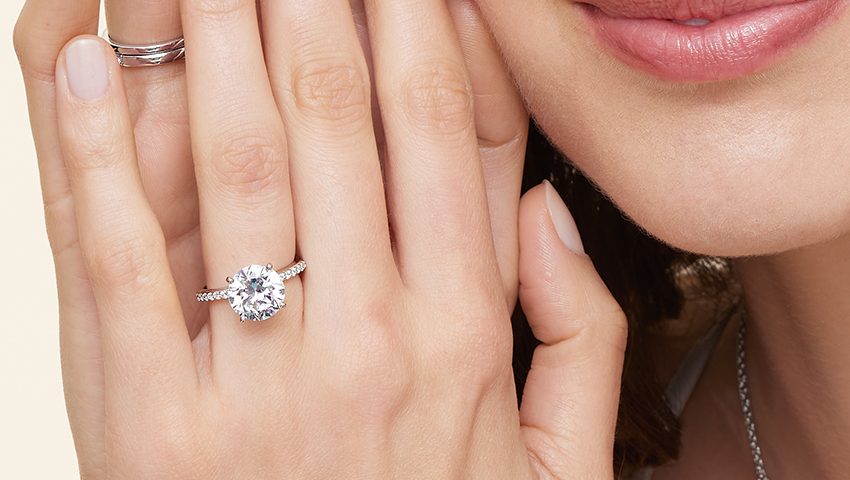DISCOVER LAB GROWN DIAMONDS
DISCOVER LAB GROWN DIAMONDS
Fri 16, December 2022
HOW LAB-GROWN / LAB-MADE DIAMONDS ARE MANUFACTURED
Have you ever heard of lab-grown, lab-made, or manufactured diamonds and wondered how they came to be? In many cases, finding the ideal gift for that special someone can seem challenging, but if you ask us, it shouldn’t have to be this way. Luckily, our friendly team is on hand today to help you learn more about how a stunning lab-grown / lab-made diamond is made. Plus, we’ve looked at the differences between lab-grown and natural diamonds to help inform your decision.
WHAT IS A LAB-CREATED OR
LAB-GROWN DIAMOND?
A lab-grown diamond, at its simplest, is a diamond that has been created artificially in laboratory settings. Rather than being mined from the earth, specialist scientists create manufactured diamonds by replicating the conditions required for their formation within a laboratory; this results in creating an authentic diamond (without the massive expense associated with them nor the intrusive procedures to our planet).


HOW ARE LAB-MADE DIAMONDS MANUFACTURED?
At its simplest, the process of creating lab-grown, lab-made, manufactured diamonds is relatively simple: it requires scientists to replicate the natural process that results in the formation of a diamond within a laboratory setting. However, this isn’t as straightforward as it might seem in practice since the conditions needed to create even a tiny diamond are exceptionally difficult. There are two main processes used to develop lab-made manufactured diamonds. One option is to use chemical vapour deposition (CVD), which uses a thin slice of diamond to grow a larger diamond. Labs can create authentic, high-quality diamonds by exposing the thin diamond to carbon-rich gas under extreme temperatures. Alternatively, lab-made diamonds can be made through high-pressure, high-temperature (HPHT) processes. During this process, a significant amount of carbon is exposed to extremely high heat and pressure within a metal cube; this allows the carbon to form diamonds, as occurs in natural environments eventually. The only drawback of this process is that some trace residues from the The original metal casing may contaminate the final diamond, but these traces are so minute that the naked eye cannot easily see them.
WHAT ARE THE DIFFERENCES BETWEEN NATURAL AND MANUFACTURED DIAMONDS?
Natural and manufactured diamonds are both created by very similar processes. As such, they have the same features overall. Indeed, while there are minute differences at a chemical level (e.g. natural diamonds contain a small amount of nitrogen), the visible appearance of lab-made and natural diamonds is indistinguishable. As such, even gemologists have to assess a diamond from its laser-inscribed certification number to understand its origin.
Similarly to traditional diamonds, all manufactured diamonds undergo a rigorous grading assessment, providing information about their quality. After all, not all diamonds are created equally – and even in laboratory settings, this is still a very costly and tricky process.
